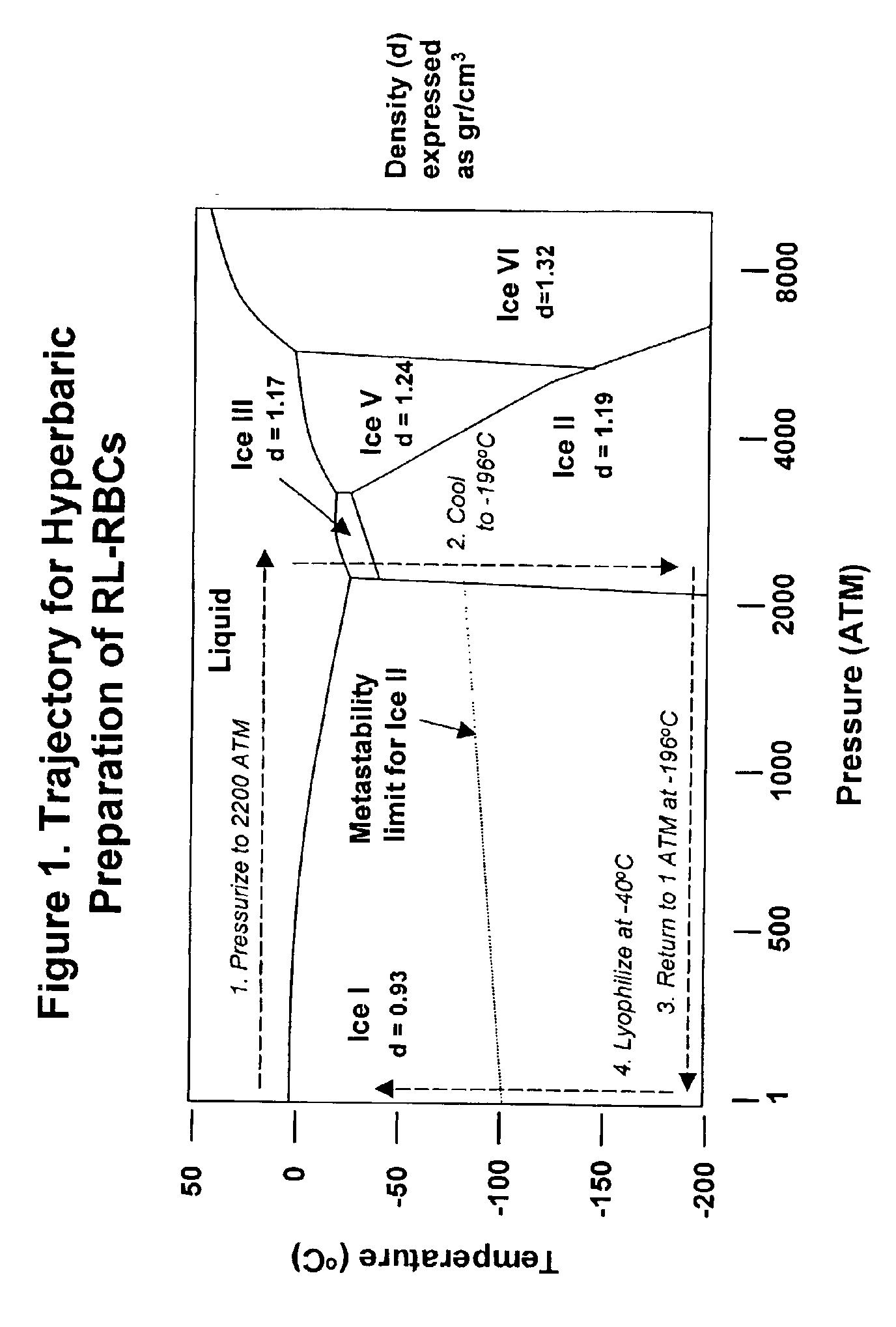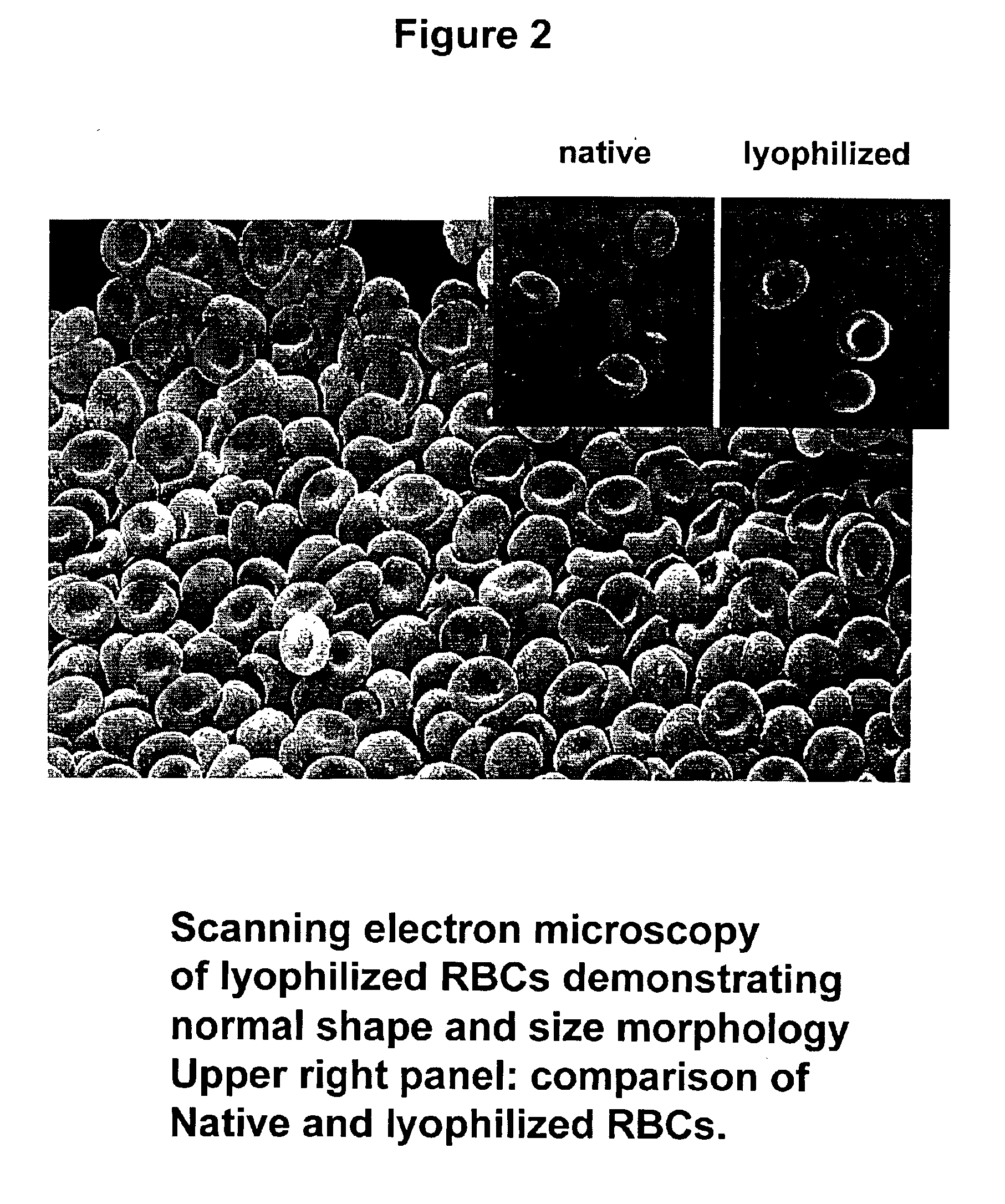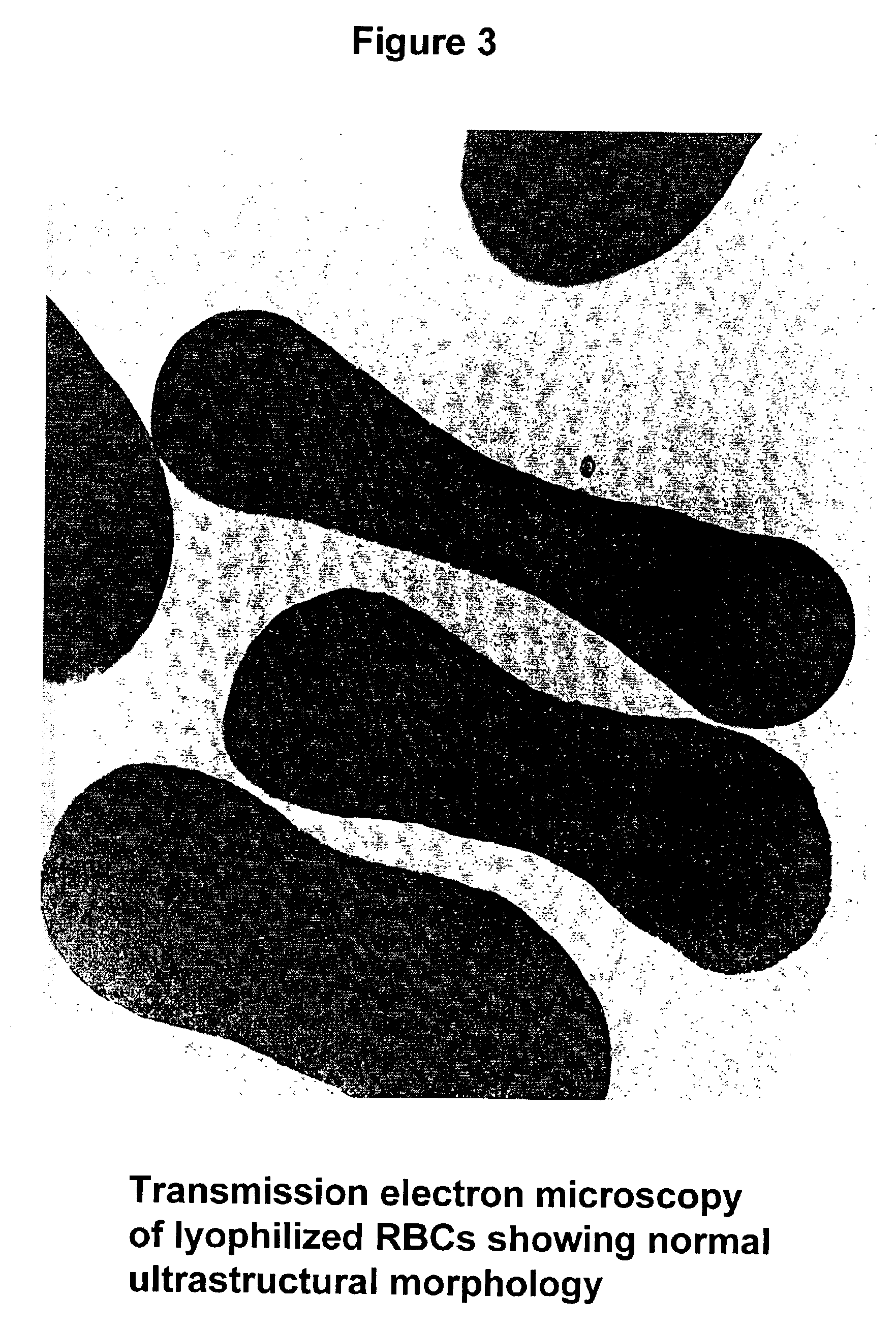Fixed dried red blood cells and method of use
a technology of red blood cells and dried red blood cells, which is applied in the field of fixed dried red blood cells and method of use to achieve the effect of enhancing the oxygen carrying capacity of the blood vessel
- Summary
- Abstract
- Description
- Claims
- Application Information
AI Technical Summary
Problems solved by technology
Method used
Image
Examples
example 1
Preparation of Human Lyophilized RBCs with 0.05% Glutaraldehyde (Protocol 1)
[0044]4.5 ml of human blood is drawn into a syringe with 0.5 ml CDPA-1. The blood is then gently place into 15 ml conical centrifuge tube and centrifuge for 10 min at 1200 rpm. The upper platelet-rich plasma layer is removed and discarded. RBCs are diluted to a Crit=5% with PBS and centrifuged as before. The supernatant is removed and the RBCs are resuspended in the original volume of PBS for Crit=5%. The centrifugation is repeated and the final pellet is resuspended for a Crit=5% in PBS. Dilute 50% (v / v) freshly opened glutaraldehyde {fraction (1 / 1000)} into the RBCs for a final concentration of cross-linker=0.05% (v / v) and incubate for 20 min at 37° C. on rocker. The RBCs are centrifuged as before and the pellet is re suspended for a Crit=5%. The centrifugation is repeated. The final pellet is Resuspended in PBS+1% PEG 8,000 for a Crit=25%. The cross-linded RBCs are proportioned into 2 ml plastic cryovials...
example 2
Preparation of Human Lyophilized RBCs with 1,6-diphosphofructose to Normalize Hemoglobin Oxygen Affinity (Protocol 2)
[0047]The procedure in example 1 was altered by incubating the centrifically washed RBCs with increasing concentrations of 1,6-diphosphofructose for one hour at room temperature on a rocker before adding the cross-linker, and then for an additional 20 minutes during the cross-linking step. After lyophilization and rehydration, oxygen association-disassociation curves were measured (see FIG. 4). 10 mM 1,6-diphophofructose is the preferred concentration to restore native oxygen ligation kinetics.
example 3
Occlusion of Surface Membrane by Covalent PEG 5,000 Attachment (Protocol 3)
[0048]PEG-aldehyde was prepared by dropwise adding 5 ml of 50% (w / v) PEG-amine (MW=5,000) in PBS to 5 ml of 50% (v / v; 6.29 Molar) glutaraldehyde. The resulting solution was dialyzed thee times over a three day period vs. sodium acetate / acetic acid at pH=5.5 with a total acetate / acetic acid concentration of 20 mM. The resulting PEG-aldehyde (5 mM PEG-aldehyde) was stored at 4° C. until use (within four weeks). Immediately before use, the 5 mM PEG-aldehyde stock was diluted 1 / 1 with 2×PBS.
[0049]Human blood was obtained and then RBCs were isolated and freed from plasma proteins with two centrifugational wash steps as detailed in Example 1. The RBCs were were suspended in PEG-aldehyde (2.5 mM as prepared above) for a Crit=5% after the last wash and reacted for one hour on a rocker at room temperature. Glutaraldehyde was added to the mixture and allowed to react as described in Example 1. The PEGylated RBCs were f...
PUM
 Login to View More
Login to View More Abstract
Description
Claims
Application Information
 Login to View More
Login to View More - R&D
- Intellectual Property
- Life Sciences
- Materials
- Tech Scout
- Unparalleled Data Quality
- Higher Quality Content
- 60% Fewer Hallucinations
Browse by: Latest US Patents, China's latest patents, Technical Efficacy Thesaurus, Application Domain, Technology Topic, Popular Technical Reports.
© 2025 PatSnap. All rights reserved.Legal|Privacy policy|Modern Slavery Act Transparency Statement|Sitemap|About US| Contact US: help@patsnap.com



